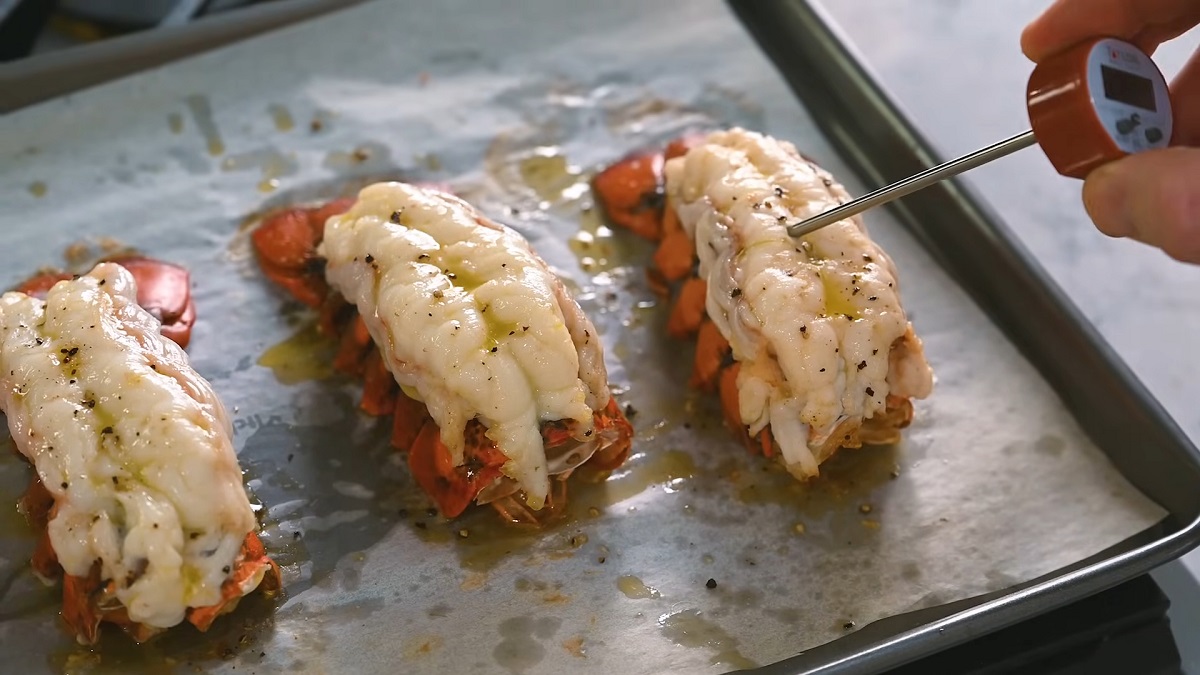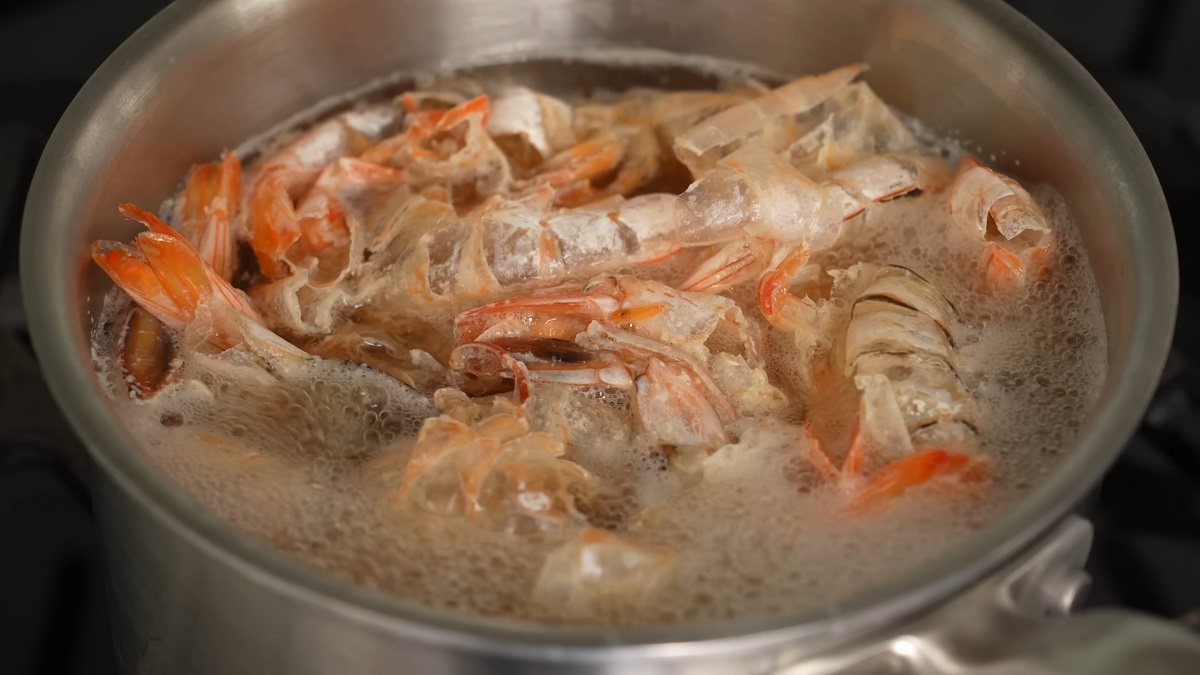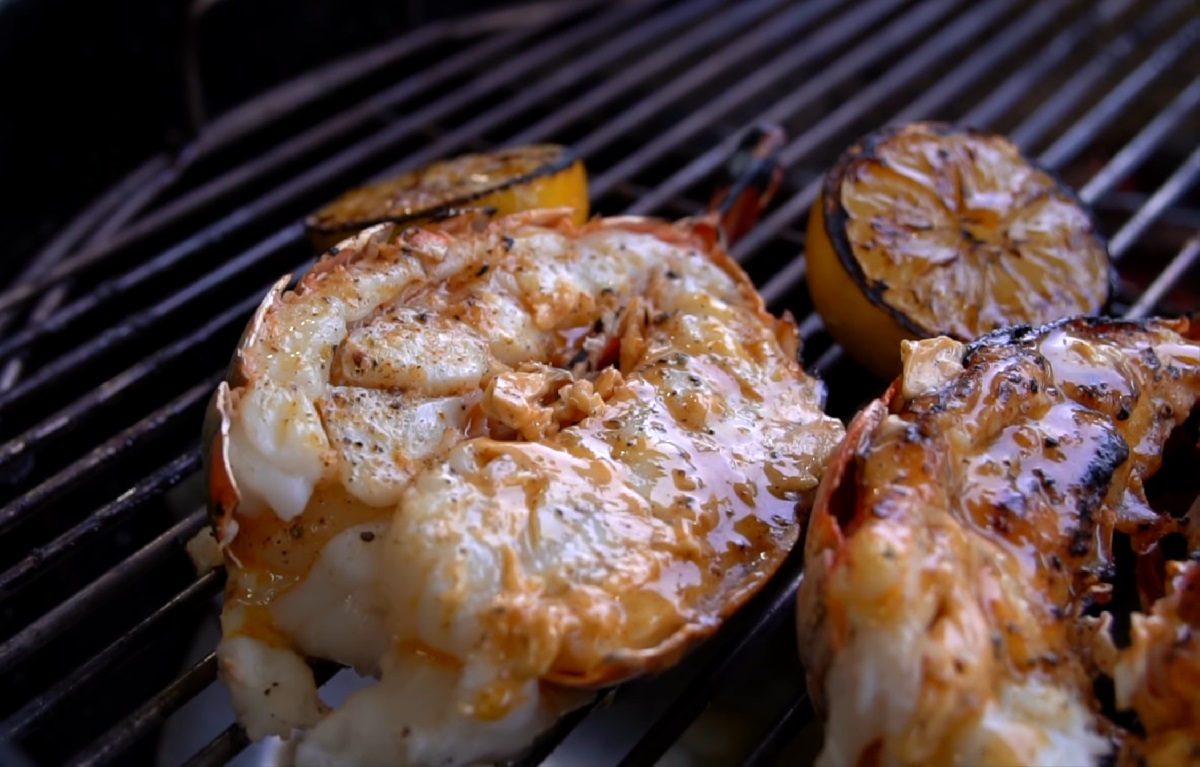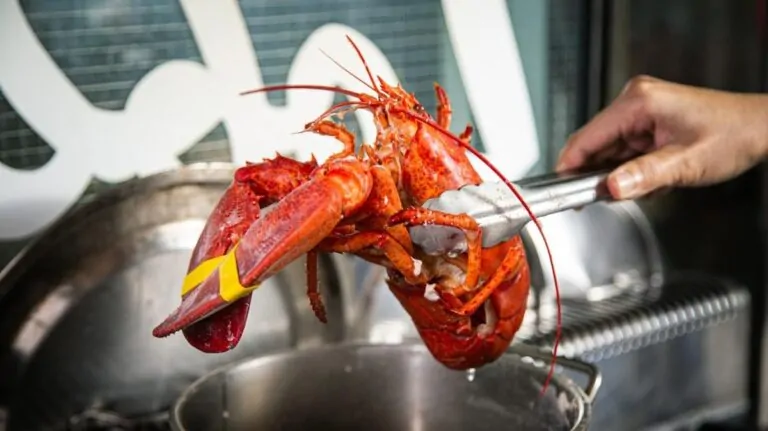Cooking a whole lobster can feel overwhelming, especially for those doing it for the first time. The anticipation of cracking open that bright red shell and enjoying tender meat is exciting, but safety must come first. Many assume boiling or steaming for a set time is enough, but that approach does not guarantee the lobster is safe to eat. Cooking seafood requires precision, and without the right knowledge, mistakes can happen.
Some have faced disappointing meals because of overcooked, rubbery lobster, while others have unknowingly eaten undercooked seafood, risking illness. A great lobster dish requires more than just timing—it demands attention to internal temperature.
The Correct Internal Temperature for Safe Lobster
Cooking whole lobster requires precision to ensure safety. The internal temperature must reach 145°F (63°C) to kill harmful bacteria. Many assume that a bright red shell means the lobster is fully cooked, but that is not always true. Meat inside can remain undercooked if temperature checks are ignored. Using color or cook time as the only indicators leads to unsafe results.
Why 145°F is the Magic Number

Lobster carries bacteria like Vibrio, which thrive in raw seafood. Cooking to 145°F eliminates these risks. Unlike beef or chicken, lobster has a different protein structure, meaning undercooked meat may look firmer than it actually is. Internal temperature remains the only reliable way to confirm safety.
What Happens if the Temperature is Too Low?
Lobster cooked below 145°F may contain bacteria that cause food poisoning. Symptoms include nausea, vomiting, and diarrhea. Eating raw or undercooked shellfish increases the risk of infections, especially in those with weaker immune systems.
Can Overcooking Be a Problem?
Going far beyond 145°F results in dry, rubbery lobster. Meat shrinks, loses moisture, and becomes tough. Precision matters, so removing lobster from heat as soon as it hits the safe temperature ensures perfect texture and flavor.
How to Check Lobster’s Internal Temperature Accurately
A food thermometer is the only reliable tool for checking lobster’s internal temperature. Many skip this step, leading to either undercooked or overcooked lobster. Guesswork is not an option when safety is on the line.
Where to Insert the Thermometer

- Thickest Part of the Tail: The tail holds the densest meat, making it the best spot to check for doneness.
- Claws: Claw meat takes longer to cook, so confirming the temperature here ensures even cooking.
- Avoid the Shell: Inserting the thermometer into the shell gives inaccurate readings. Always push it into the center of the meat.
Best Type of Thermometer for Lobster
- Digital Instant-Read Thermometer: Provides fast and accurate results.
- Probe Thermometer: Allows continuous monitoring while cooking.
- Avoid Basic Dial Thermometers: These take longer to stabilize and are less precise.
Common Temperature Checking Mistakes
- Measuring Too Soon: Checking before the heat has fully penetrated the meat leads to false readings.
- Not Testing Multiple Spots: Only checking one part can give an incomplete picture. Always test both the tail and claws.
- Skipping the Thermometer Entirely: Relying on color or time alone is a mistake that risks undercooked seafood.
Common Mistakes That Ruin Lobster Quality
Many people ruin lobster by making simple but avoidable mistakes. Some overcook it, turning the meat into a dry, rubbery mess. Others undercook it, leaving it unsafe to eat. Relying on shell color instead of checking internal temperature often leads to disaster. A lobster’s shell turns red well before the meat is fully cooked, creating a false sense of readiness.
Overcooking Leads to Ruined Texture
Cooking lobster for too long makes the meat lose moisture, causing it to shrink and toughen. Once the internal temperature hits 145°F (63°C), removing it from heat prevents overcooking. Those who ignore temperature checks usually end up with an unpleasant texture. Timing varies based on lobster size and cooking method, so using a thermometer remains the only way to guarantee perfect results.
Uneven Cooking Can Ruin the Meal
Placing a whole lobster directly into boiling water without allowing it to acclimate leads to uneven cooking. A lobster pulled straight from a cold fridge and tossed into boiling water cooks unevenly, with the claws often needing more time than the tail. Letting the lobster sit at room temperature for a few minutes before cooking allows for a more even cook.
Letting It Rest Makes a Difference
Cracking into the lobster too soon after cooking leads to dry, less flavorful meat. Letting it rest for 5 minutes allows juices to redistribute. Cutting into it immediately releases moisture, making the meat tougher. Small details like these separate an amazing lobster meal from a disappointing one.
Best Cooking Methods for Whole Lobster
Boiling, steaming, and grilling all work for cooking lobster, but each method affects flavor and texture differently. Some prefer the traditional boiling approach, while others swear by steaming for a firmer texture. Grilling adds a smoky flavor, but it requires extra care to avoid overcooking.
Boiling – The Most Common Method

Boiling remains the most popular way to cook lobster because it is simple and reliable. A large pot of salted water ensures even cooking. Once the water reaches a rolling boil, submerging the lobster fully and cooking it based on weight guarantees the best results. A 1.5-pound lobster takes about 8-10 minutes to reach 145°F (63°C).
Steaming Preserves More Flavor
Steaming uses less water, which helps retain more of the lobster’s natural sweetness. It also prevents water absorption, keeping the texture firmer. A steaming rack or basket keeps the lobster elevated while hot vapor surrounds it. Steaming takes slightly longer than boiling, but the flavor payoff makes it worth it.
Grilling Adds Smoky Flavor but Requires Care

Grilling lobster enhances the taste with a smoky, charred edge. Cutting the lobster in half and brushing it with butter before placing it on a hot grill helps retain moisture. The biggest mistake with grilling is leaving it over direct heat for too long. Cooking over medium heat and checking temperature frequently prevents drying out.
Storing and Handling Lobster Safely Before Cooking
Proper storage and handling play a major role in keeping lobster fresh and safe. Many overlook the fact that mishandling seafood can lead to food poisoning. Live lobsters must be stored correctly to stay fresh before cooking. Dead lobsters spoil quickly, and cooking one that has been dead too long can result in bacteria growth that no amount of heat will fix.
Keeping Lobster Alive Before Cooking
Live lobsters should be kept cool and damp, never submerged in fresh water. Storing them in the refrigerator covered with a damp cloth keeps them alive until cooking. Freshwater kills lobsters quickly, leading to rapid spoilage. For best results, cook them within 24 hours of purchase.
Handling Lobster Properly Before Cooking
Moving a live lobster incorrectly can cause injury. Grasping it from the back of the shell prevents getting pinched by its claws. Some prefer to place lobsters in the freezer for 15 minutes before cooking to make them less active. This does not kill them but slows movement, making handling easier.
What Happens if a Lobster Dies Before Cooking?
If a lobster dies before cooking, it must be checked carefully before use. The tail should curl tightly when touched, and the meat should not have a foul odor. A dead lobster left at room temperature for too long becomes unsafe to eat. If unsure, it is best to discard it.
FAQs
What is the best way to serve whole lobster?
Melted butter and fresh lemon enhance the natural sweetness of lobster. Some prefer garlic butter, while others enjoy a simple squeeze of lemon.
Can lobster be eaten cold?
Yes, chilled lobster is often used in dishes like lobster rolls or salads. It should always be fully cooked before being refrigerated.
Is there a best time of year to buy lobster?
Lobster is available year-round, but many consider late summer and early fall the best time due to peak quality and better prices.
What is the green substance inside lobster?
The green part is the tomalley, which functions as the liver and pancreas. Some enjoy its rich flavor, but others prefer to avoid it.
Do larger lobsters taste better?
Larger lobsters have firmer meat, while smaller ones are often more tender. Preference depends on texture and personal taste.
Last Words
Cooking whole lobster the right way means focusing on temperature, timing, and handling. A thermometer is essential for safety, and 145°F (63°C) is the only number that matters. Overcooking ruins texture, and undercooking risks illness.
Letting the lobster rest after cooking keeps it juicy. Serving it with melted butter and fresh lemon enhances its natural sweetness. Paying attention to these details ensures every bite is tender, flavorful, and safe to eat.
Next Recipe to Try – Shrimp Burrito

